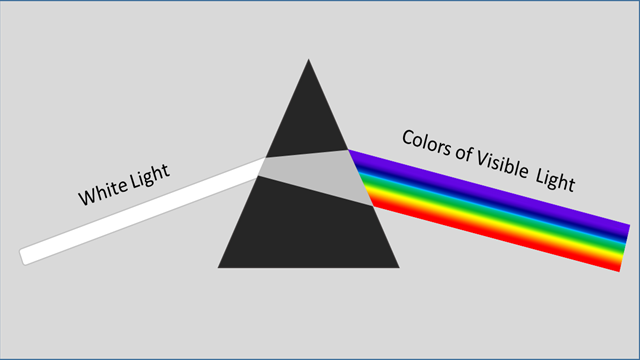2 The Colours of Visible Light
Aaron Lee
Most light sources, including the sun, emit white light, which is actually a combination of all the various wavelengths of visible light that we can perceive.
By passing a beam of white light through a prism we can separate each colour into its individual visible wavelength. This creates the familiar rainbow pattern, which is known as the colour spectrum.

A light source emitting radiant energy relatively balanced in all visible wavelengths will appear white.
The colour spectrum ranges from violet through blue, green, yellow, orange and finally red.
The human eye is not equally sensitive to all wavelengths of light. Tests have shown that the average eye is most responsive to a wavelength of about 555 nanometres, which falls in the yellow-green area of the colour spectrum.
When white light hits an object, most of the wavelengths are absorbed, slightly warming the object. Any unabsorbed wavelengths are reflected into our eyes, and this is the colour of the object that we perceive.
For example, a red apple absorbs all the visible wavelengths of white light, except red, which bounces off the apple and into our eyes. Therefore, all the colours that we see in objects are the result of the waves of radiant energy that actually reach the eye.
The colour of light that we see can be changed by transmission through a filtering medium that diffuses or refracts light; or by reflection where the reflecting surface can diffuse or absorb light rays.
